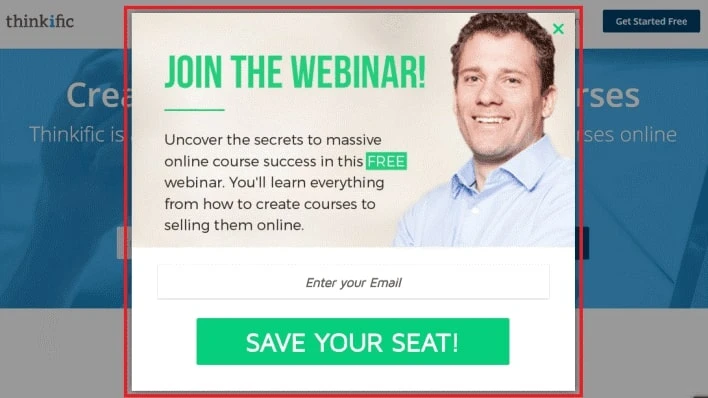I’ll make this simple for you… if you want to stay in business, you need leads!
Whether you’re a local service business (dentist, plumber, attorney, etc.) or an online coach, everyone who does business these days must have the ability to attract potential customers and convert them into paying customers. It can make all the difference in driving revenue growth and sustaining long-term success.
One of the most effective strategies is the use of lead magnets to generate targeted, qualified leads. Mostly because you can set it up and let it work for you.
The beauty of lead magnets is that they can be used for any business in any niche. From big business to a small solopreneur, and everyone in between, can use and benefit from lead magnets.
The next three articles will tell you everything you need to know, so you can start using lead magnets to help grow your business.
What Are Lead Magnets
Lead magnets are a valuable tool that businesses can use to attract potential customers by offering something of value in exchange for their contact information.
Essentially, they are a way to incentivize potential customers to provide their email address or other contact information, which allows businesses to nurture them into paying customers over time.
Lead magnets can take various forms, including e-books, webinars, free trials, discount codes, and consultations. The key is to create something that aligns with your target audience’s needs and interests and provides them with a solution to a problem or a valuable resource that they cannot find elsewhere.
For instance, a local hardware store can offer a free e-book on home improvement tips, while a consulting firm can provide a free consultation on business strategy.
The effectiveness of lead magnets lies in their ability to provide immediate value to potential customers, while also allowing businesses to build a relationship with them over time.
By offering something that is genuinely helpful or valuable, businesses can establish trust with potential customers and nurture them into paying customers down the line.
In addition, lead magnets provide businesses with a database of potential customers that they can use to nurture and market to in the future.
This database can be used to send targeted email campaigns, run retargeting ads, and personalize marketing messages, which can all help to drive revenue growth.
Overall, lead magnets are an effective way for businesses to attract potential customers and generate leads.
By creating valuable resources and offering them in exchange for contact information, businesses can establish trust, build relationships, and nurture potential customers into paying customers over time.
9 Specific Benefits of Using Lead Magnets
Lead magnets offer several benefits for businesses looking to generate leads and grow their customer base…
- Increased lead generation: Lead magnets are an effective way to generate new leads by offering something of value to potential customers. By providing valuable resources or discounts, businesses can encourage potential customers to provide their contact information, which can then be used to nurture them into paying customers.
- Improved targeting: Lead magnets allow businesses to target specific segments of their audience based on their interests, needs, and pain points. By creating lead magnets that align with these factors, businesses can attract highly targeted leads and increase their chances of converting them into paying customers.
- Enhanced brand awareness: Lead magnets can help businesses establish themselves as thought leaders in their industry by providing valuable resources that are helpful to their target audience. By positioning themselves as experts, businesses can build trust and increase their brand awareness among potential customers.
- Increased engagement: Lead magnets can help businesses engage with potential customers by providing them with valuable resources and solutions to their problems. This can increase their interest in the business and encourage them to interact with the business further.
- Better customer data: Lead magnets provide businesses with a database of potential customers that they can use to personalize their marketing efforts and nurture them into paying customers. This data can be used to create targeted email campaigns, run retargeting ads, and personalize marketing messages, which can all help to drive revenue growth.
- Cost-effective: Lead magnets are a cost-effective way to generate leads and grow your customer base. Compared to other marketing strategies such as paid advertising, lead magnets require minimal investment and can provide a high return on investment (ROI) over time.
- Long-term benefits: Lead magnets can provide long-term benefits for businesses by establishing a database of potential customers that can be nurtured over time. By building relationships with potential customers, businesses can increase their chances of repeat business and referrals.
- Improved conversion rates: Lead magnets can improve conversion rates by providing potential customers with a clear incentive to take action. By offering something of value in exchange for contact information, businesses can increase their chances of converting potential customers into paying customers.
- Competitive advantage: Lead magnets can give businesses a competitive advantage by differentiating themselves from their competitors. By providing valuable resources that cannot be found elsewhere, businesses can establish themselves as industry leaders and attract more potential customers.
As you can see, lead magnets offer numerous benefits for businesses looking to generate leads and grow their customer base.
From increased lead generation and improved targeting to enhanced brand awareness and cost-effectiveness, businesses can leverage lead magnets to drive revenue growth and stay competitive in today’s dynamic marketplace.
10 Most Popular Types of Lead Magnet
Lead magnets come in all varieties, from simple cheat sheets to free videos or webinars, but which is best for your business? Well, it depends on your customer and his or her journey. You need to know your customer in order to choose the lead magnet that will attract them the best.
The following list will get you started!
- eBooks and whitepapers: These are in-depth resources that provide valuable information on a particular topic. They can be used to position a business as an industry expert and attract highly targeted leads.

- Webinars and online courses: These are educational resources that provide valuable information on a particular topic. They can be used to attract highly targeted leads and establish a business as a thought leader in their industry.
- Checklists and cheat sheets: These are quick and easy-to-digest resources that provide practical tips and advice on a particular topic. They can be used to attract a wide range of leads and position a business as a helpful resource for potential customers.

- Templates and toolkits: These are customizable resources that provide a framework for a particular task or process. They can be used to attract leads who are looking for practical solutions to their problems and position a business as a helpful resource.
- Quizzes and assessments: These are interactive resources that provide personalized feedback to potential customers. They can be used to attract highly engaged leads and provide valuable insights into their interests and pain points.
- Free trials and demos: These are opportunities for potential customers to try a product or service before making a purchase. They can be used to attract leads who are interested in a particular product or service and increase their likelihood of making a purchase.
- Case studies and success stories: These are stories of how businesses or individuals have achieved success using a particular product or service. They can be used to attract highly targeted leads who are interested in a particular use case or industry and establish a business as a trusted resource for potential customers.
- Free samples or trials: These are opportunities for potential customers to try a product or service for free. They can be used to attract leads who are interested in a particular product or service and increase their likelihood of making a purchase.
- Infographics: These are visual representations of data or information that are easy to consume and share. They can be used to attract leads who are interested in a particular topic and position a business as a helpful resource for potential customers.

- Calculators: These are interactive tools that provide personalized insights or recommendations based on user input. They can be used to attract highly engaged leads who are interested in a particular topic and provide valuable insights into their needs and preferences.
One more important point to think about is that businesses can also use a combination of different types of lead magnets to create a more comprehensive and effective lead generation strategy.
For example, a business might offer a free trial followed by an educational webinar and a case study to attract and nurture leads through different stages of the buyer’s journey.
The key is to offer value and relevance at each stage of the customer journey, and to make it easy for potential customers to engage with the business and take the next step towards a purchase.
By experimenting with different types of lead magnets and tracking their performance, businesses can optimize their lead generation efforts and achieve better results over time.
Creating Your Lead Magnet
Now that you know how valuable a lead magnet can be to the growth of your business, it’s time to carefully consider which lead magnets are most suitable for your target audience and goals.
Here are some tips for creating an effective lead magnet:
- Define your target audience: Before creating a lead magnet, it’s important to identify your target audience and understand their interests, needs, and pain points. This will help you create a lead magnet that is relevant and valuable to your audience.
- Choose a format: Based on your target audience’s preferences and the information you want to provide, choose a format for your lead magnet. Popular formats include eBooks, whitepapers, webinars, checklists, templates, and quizzes.
- Determine the topic: The topic of your lead magnet should be aligned with your target audience’s interests and needs. Choose a topic that is relevant, valuable, and actionable.
- Keep it simple and concise: Your lead magnet should be easy to understand, so keep it focused on one single topic and avoid using too much jargon or complex language.
- Offer something unique: Make sure your lead magnet offers something new or valuable. It should provide insight that helps people make better decisions or solve problems they may have.
- Create the content: Once you have determined the format and topic, create the content for your lead magnet. This may involve conducting research, writing or designing the content, and ensuring that it’s high-quality and visually appealing. This shouldn’t take much more time. To learn why, head over to our article on The Minimalist’s Guide to Growing an Uncomplicated Email List
- Optimize for lead generation: When creating your lead magnet, it’s important to optimize it for lead generation. This may involve adding a clear call-to-action, providing a lead capture form, and ensuring that the lead magnet is easy to access and share.
- Promote your lead magnet: Once your lead magnet is ready, it’s important to promote it through various channels, such as your website, social media, email marketing, and paid advertising. This will help you attract and engage with potential customers and generate leads for your business.
- Measure and Analyze: Businesses should also consider measuring and analyzing the performance of their lead magnets to improve their lead generation efforts. This involves tracking metrics such as the number of leads generated, conversion rates, and engagement levels, and using this data to optimize and refine your lead magnets over time. By continually testing and iterating your lead magnets, you can improve their effectiveness and drive better results for your business.
Next, you need to set up a system to capture leads. These are often called email autoresponders. This can be done through a sign-up form on your website by using a third-party service such as Mailchimp or Aweber. You can then use the leads to send follow-up emails or create targeted campaigns.





